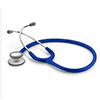Take charge of your health! Getting active, eating right, and keeping a healthy weight are the three key ingredients for a longer and healthier life.
Plan for Success

Making big changes in your life is hard, especially if you are faced with more than one change. You can make it easier by taking these steps:
Planning for change
- Set a goal you think you can achieve. Start small and be realistic.
- Educate yourself on ways to reach your goal. Decide exactly which one or two behaviors you will be changing.
- Choose how you can measure progress.
- Act on your plan. Review your goals every morning, and measure results frequently. Keep family and friends involved in your efforts.
- Use what you learn: if you are not meeting your goals, look for the reasons why, and plan how to address them.
Step 1 – Weighing Right

Being overweight can keep your body from using sugar properly. It can also cause high blood pressure.
In one study, people who lost between 5 and 7 percent of their body weight significantly reduced their risk of type 2 diabetes. For example, if you weigh 200 pounds, losing only 10 pounds could make a difference!
Choose sensible ways to get in shape:
- Avoid crash diets. Instead, eat less of the foods you usually have. Limit the amount of fat and sugars you eat.
- Increase your physical activity. Aim for at least 30 minutes of brisk activity most days of the week.
- Set a reasonable weight-loss goal, such as losing 1 pound a week. Aim for a long-term goal of losing 5 to 7 percent of your total body weight.
Tools to use
- What's my healthy weight?Find the right weight for your height
- Take control of your weightStep-by-step advice from the American Cancer Society
- Weight loss for teens
Step 2 – Make Wise Food Choices

What you eat has a big impact on your health. By making wise food choices, you can help control your body weight, your blood pressure and blood sugar, and cholesterol.
Healthy eating
- Increase the amount of vegetables and fruit you eat every day. Eat plenty of vegetables at every meal to turn your diet into one aimed at high nutrition without extra calories. Reach for fresh fruit instead of desserts.
- Drink water instead of soft drinks, sodas or sugar-sweetened tea.
- Limit your fat intake to about one-fourth of your total calories. For example, if your food choices add up to about 2,000 calories a day, try to get no more than 500 calories from fat (about 56 fat grams). Your doctor or a dietitian can help you figure out the best level of dietary fat for you. You can check food labels for fat content, too.
Losing weight
- Reduce serving sizes of each meal. Eat until you start to feel less hungry, not until you are full.
- Reduce the total number of calories you have each day.
- Keep a food and exercise log. Write down what you eat, how much you exercise — anything that helps keep you on track. Use you food log to see how many calories you're currently eating every week, and then aim to regularly eat less until you see your weight begin to change for the better.
Tools to use
- Choosing Foods for Health and Weight Loss For those looking to lose weight, or to just stay healthy
- Daily Food Planner
Helps you choose the right balance of foods based on your age, weight and physical activity - The DASH diet
One of the best eating plans for general health and weight loss - Mediterranean Diet
An healthy eating approach that emphasizes vegetables, fruit, grains and fish
Step 3 – Be Physically Active Every Day

Regular exercise tackles several risk factors at once. It helps you lose weight, keeps your cholesterol and blood pressure under control, and helps your body control blood sugar. Being physically active for 30 minutes a day, 5 days a week, reduces your risk of type 2 diabetes and helps you maintain a healthy weight.
If you are not very active, you should start slowly, talking with your doctor first about what kinds of exercise would be safe for you. Make a plan to increase your activity level toward the goal of being active at least 30 minutes a day most days of the week.
Choose activities you enjoy. Walking is one of the best ways to work extra activity into your daily routine:
- Take the stairs rather than an elevator or escalator.
- Park at the far end of the lot and walk.
- Get off the bus a few stops early and walk the rest of the way.
- Walk or bicycle instead of drive whenever you can.
Tools to use
- Get active — start walkingWhat walking can do for you, and how to get started
- Tips for getting activeWhy activity is important, and simple ways to get more activity into your day
- Physical activity guidelinesAdvice for different age groups from the CDC
Bonus – Keep Track of Your Health

Yearly checkups with your doctor keep you in touch with changes in your health. They let you learn about problems early, and take the right steps to correct them. To live your best life, make your doctor your partner. Even a good pharmacy can help you keep track of your basic health by providing blood pressure checks and other services conveniently.
Your most important health measurements are:
- Blood pressure: Because heart disease kills more Mississippians than any other cause, you should know your blood pressure and make sure it stays in a healthy range. High blood pressure can quickly lead to damage of the heart, liver and major organs of the body. High blood pressure is easy to avoid with the right choices.
- Blood sugar (glucose): Like high blood pressure, blood sugar that's not controlled can bring on serious health problems, including diabetes. Diabetes is one of Mississippi's top chronic diseases, and it shortens the life of too many adults. Fortunately, there are simple ways to keep healthy levels if you act in time, so regular checks are vital.
- Blood cholesterol: Unhealthy fats in your blood, especially cholesterol, can mean a greater risk of heart attack and stroke. The healthy living steps we've discussed above are a good defense against high cholesterol. Your doctor can help you know your cholesterol numbers, and keep on a healthy track.
Tools to use
- Know Your NumbersBlood sugar, pressure and cholesterol: why they matter, and what to aim for
- High blood pressure and how to control itHigh blood pressure doesn't have obvious symptoms. Checking it is easy, and controlling it can be, too.
- Preventing diabetesThis preventable disease affects far too many Mississippians. Learn what to look for, and the right steps to take.

